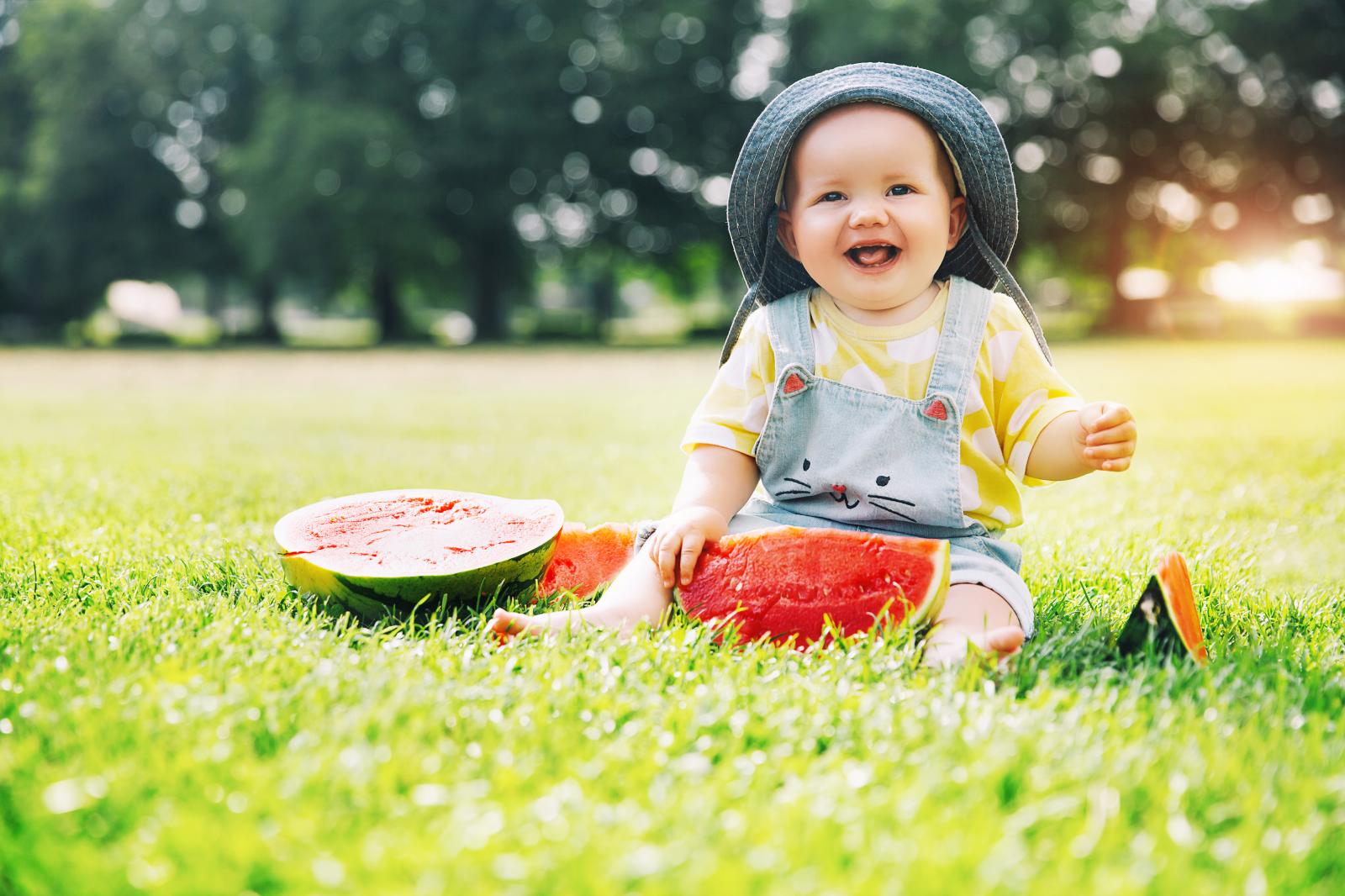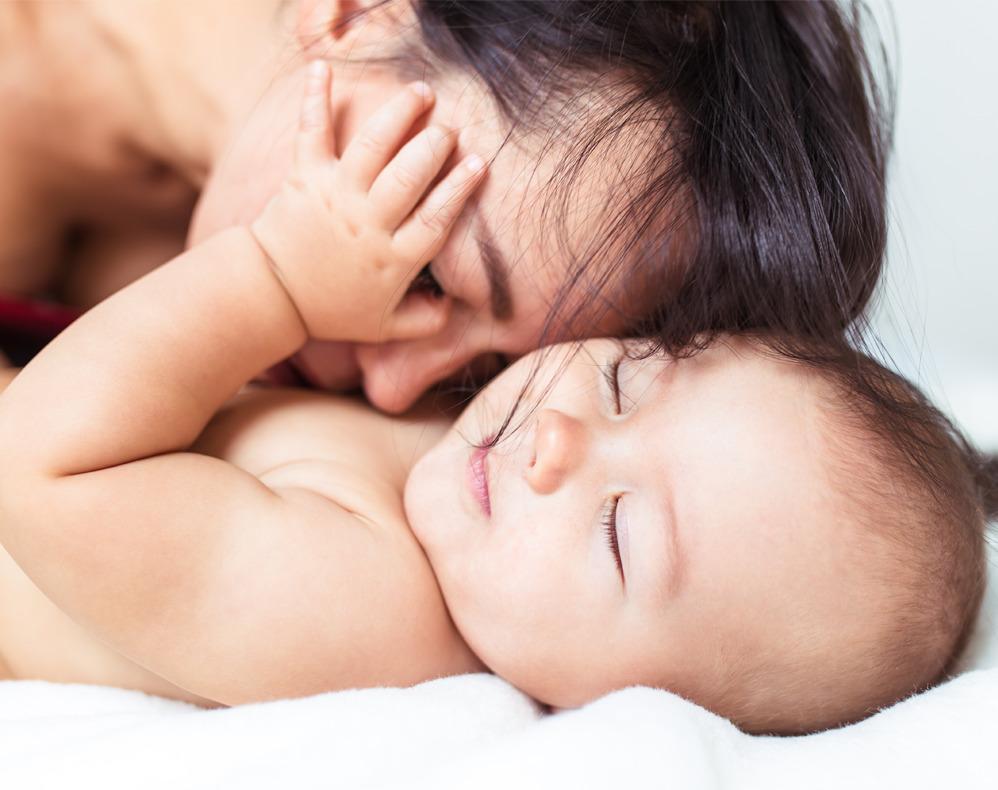Who hasn’t gone mushy over a baby’s skin before? Whether we’re squeezing chubby cheeks, or marveling at the delicate peach fuzz on a newborn’s ear, baby skin sets the standard for all things soft with good reason. Spend extended time around a baby, though, and you’ll quickly discover that baby skin is more sensitive to the elements than adult skin, and more likely to develop a rash, infection, or acne. Since that skin you love needs a little extra TLC, here’s an all-purpose guide to caring for your baby’s skin throughout the year.
- Dress your baby in breathable fabrics like cotton that let the skin breathe.
- Extend your outdoor adventures by hanging in the shade, and planning outings in the morning and late afternoon when the sun is less direct.
- Invest in a broad-rimmed sunhat and baby clothing that has built-in sun protection.
- If you use sunscreen on your baby, choose one that’s free of parabens and sulfates, hypoallergenic, and has an SPF of 50 or higher[2]. Dermatologists recommend testing a small patch of skin for a possible allergic reaction before applying to larger areas.[3]
- Check for sunburn frequently, and head indoors at the first sign of red.[4] If your baby does get a sunburn, apply a cool compress to the tender spot.[5]

- Layer your baby in breathable fabrics, and remove a layer if she seems too warm. Over bundling[6] can lead to heat rash, so check your baby’s comfort level often.
- Add a thin layer of fragrance-free lip balm to your baby’s lips to help protect them from dryness.
- Keep your cold-weather adventures brief, and consider a fragrance-free moisturizer on baby’s cheeks if they get red or irritated.
- Add a humidifier to your baby’s nursery to boost humidity in the air and help counteract the drying effects of heaters and furnaces.[7]
- Bathe your baby in water that’s warm, but not too warm, since your baby’s skin is extra-sensitive to temperature.
- Use soaps that are free of fragrance or alcohol, which may be less likely to irritate the skin[9].
- Fight cradle cap by gently massaging your baby’s scalp with your fingers or a soft brush to loosen the scales.
- Let your baby’s skin dry completely before putting a diaper back on. Keeping the skin dry is a useful tip for diaper rash prevention.[10]
Diapers and Wipes: Choosing baby diapers and thick wipes made for a baby’s sensitive skin is another great step to promoting overall skin health. Seventh Generation’s free and clear diapers have an ultra-absorbent core that can handle up to three standard wettings between changes[11], as well as a wicking layer that pulls moisture away from the baby’s skin to help keep it dry. They’re also made without lotions or fragrance. Help prevent diaper rash by changing diapers frequently and keeping diapers snug—but not too tight. View our diaper fit guide to see what size diaper your baby needs. During changes, fragrance-free, hypoallergenic baby wipes tackle tough messes while still being gentle on delicate skin.
We hope these ideas will help keep your newborn's skin healthy, so there's even more time for snuggling and squeezing those chubby cheeks. If you want to go deeper, explore our detailed guides of different kinds of diaper rash and what makes baby skin different than yours.
[1] https://www.seventhgeneration.com/raising-kids/what-you-need-know-about-your-babys-skin
[2] https://www.whattoexpect.com/first-year/sunscreen-for-babies/
[3] https://www.cbc.ca/news/health/sunscreen-sensitivity-1.4200914
[4] https://www.parents.com/baby/care/skin/save-your-babys-skin/
[5] https://www.aap.org/en-us/about-the-aap/aap-press-room/news-features-and-safety-tips/Pages/Sun-Safety-and-Protection.aspx
[6] https://www.seventhgeneration.com/free-clear-baby-diapers?v=1141
[7] https://www.thespruce.com/benefits-of-a-nursery-humidifier-2504885
[8] https://www.seventhgeneration.com/raising-kids/what-you-need-know-about-your-babys-skin
[9] https://www.dermeze.com.au/articles/6-ways-keep-babys-skin-away-irritants/
[10] https://www.seventhgeneration.com/raising-kids/learn-how-spot-four-common-types-diaper-rash
[11] https://www.seventhgeneration.com/diapers-for-sensitive-skin



